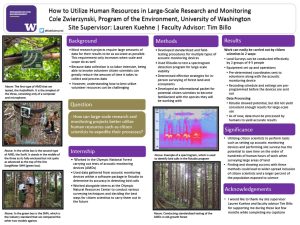How To Utilize Volunteer Resources In Large-Scale Research And Monitoring
The utilization citizen scientist volunteers, along with automatic sound detection can streamline monitoring projects on the order of hundreds of man hours in terms of data collection and processing. The aim of my internship was to verify the applicability of in-person ecosystem surveys, set-up and operation of acoustic monitoring devices, and to determine if a computer software package could collect results autonomously at the desired level of accuracy for a future experiment that will be carried out by EarthWatch. I worked with my site supervisor to develop and conduct standardized and field tests of our acoustic monitoring devices, along with various types of ecosystem assessments in small teams of people. After our time in the field, I worked in the coding platform RStudio to see if I could fine-tune a software package developed to pick out certain sound signatures within a .wav file. The effectiveness of the Swift recording devices are suitable for the future experiment, however the automatic detection is not able to produce reliable enough results to be relied on entirely on a large scale. Due to the small size and pre- programmability of the recording devices, they could be easily sent to volunteers across the country/globe to be set up anywhere to collect desired data. Despite its inability to provide consistent and accurate counts and detections at this time, automatic detection software shows immense amounts of promise for the near future in this field.
